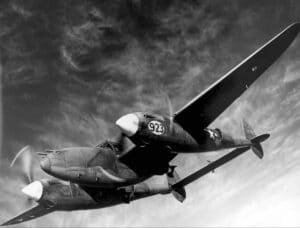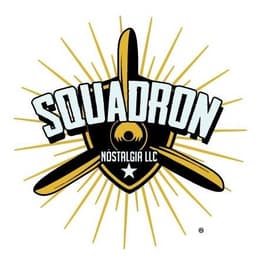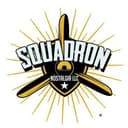Lockheed P-38 Lightning Models
Showing 1 - 14 of 14
Showing 1 - 14 of 14
Lockheed P-38 Lightning Models
 During World War II, the Lockheed P-38 Lightning was a single-seat, twin piston-engined fighter aircraft that served in the United States Army Air Corps (USAAC). It was developed by Lockheed Corporation and featured a unique twin-boom design with a central nacelle that housed the cockpit and armament. Apart from being a general fighter, the P-38 was also utilized in several aerial combat roles, such as an efficient fighter-bomber, a night fighter, and a long-range escort fighter when fitted with drop tanks.
Moreover, the P-38 was employed as a bomber-pathfinder, guiding medium and heavy bombers, or even other P-38s equipped with bombs, to their targets. In the aerial reconnaissance role, the P-38 accounted for 90 percent of the aerial film captured over Europe. Although it was not officially designated as a heavy fighter or a bomber destroyer by the USAAC, the P-38 filled those roles and more. It was nimble enough to compete with single-engine fighters, unlike heavier German Zerstörer designs crewed by two or three airmen.
The P-38 was most effective in the Pacific Theater of Operations and the China-Burma-India Theater of Operations as the aircraft of America's top aces, including Richard Bong (40 victories), Thomas McGuire (38 victories), and Charles H. MacDonald (27 victories). Until the introduction of large numbers of P-51D Mustangs towards the end of the war, the P-38 was the primary long-range fighter of the United States Army Air Forces in the South West Pacific theater.
In an early-war fighter design, both engines of the P-38 were equipped with turbosuperchargers, which made it one of the earliest Allied fighters capable of performing well at high altitudes. Furthermore, the turbosuperchargers muffled the exhaust, making the P-38's operation relatively quiet. The Lightning was highly forgiving in-flight and could be mishandled in numerous ways. However, the rate of roll in early versions was low relative to other contemporary fighters. This issue was addressed in later variants with the introduction of hydraulically boosted ailerons.
The P-38 was the only American fighter aircraft that was in large-scale production throughout the United States' involvement in the war, from the Attack on Pearl Harbor to Victory over Japan Day.
LOCKHEED MARTIN, associated emblems and logos, and body designs of vehicles are either registered trademarks or trademarks of Lockheed Martin Corporation in the USA and/or other jurisdictions, used under license by Squadron Nostalgia LLC.
During World War II, the Lockheed P-38 Lightning was a single-seat, twin piston-engined fighter aircraft that served in the United States Army Air Corps (USAAC). It was developed by Lockheed Corporation and featured a unique twin-boom design with a central nacelle that housed the cockpit and armament. Apart from being a general fighter, the P-38 was also utilized in several aerial combat roles, such as an efficient fighter-bomber, a night fighter, and a long-range escort fighter when fitted with drop tanks.
Moreover, the P-38 was employed as a bomber-pathfinder, guiding medium and heavy bombers, or even other P-38s equipped with bombs, to their targets. In the aerial reconnaissance role, the P-38 accounted for 90 percent of the aerial film captured over Europe. Although it was not officially designated as a heavy fighter or a bomber destroyer by the USAAC, the P-38 filled those roles and more. It was nimble enough to compete with single-engine fighters, unlike heavier German Zerstörer designs crewed by two or three airmen.
The P-38 was most effective in the Pacific Theater of Operations and the China-Burma-India Theater of Operations as the aircraft of America's top aces, including Richard Bong (40 victories), Thomas McGuire (38 victories), and Charles H. MacDonald (27 victories). Until the introduction of large numbers of P-51D Mustangs towards the end of the war, the P-38 was the primary long-range fighter of the United States Army Air Forces in the South West Pacific theater.
In an early-war fighter design, both engines of the P-38 were equipped with turbosuperchargers, which made it one of the earliest Allied fighters capable of performing well at high altitudes. Furthermore, the turbosuperchargers muffled the exhaust, making the P-38's operation relatively quiet. The Lightning was highly forgiving in-flight and could be mishandled in numerous ways. However, the rate of roll in early versions was low relative to other contemporary fighters. This issue was addressed in later variants with the introduction of hydraulically boosted ailerons.
The P-38 was the only American fighter aircraft that was in large-scale production throughout the United States' involvement in the war, from the Attack on Pearl Harbor to Victory over Japan Day.
LOCKHEED MARTIN, associated emblems and logos, and body designs of vehicles are either registered trademarks or trademarks of Lockheed Martin Corporation in the USA and/or other jurisdictions, used under license by Squadron Nostalgia LLC.




























